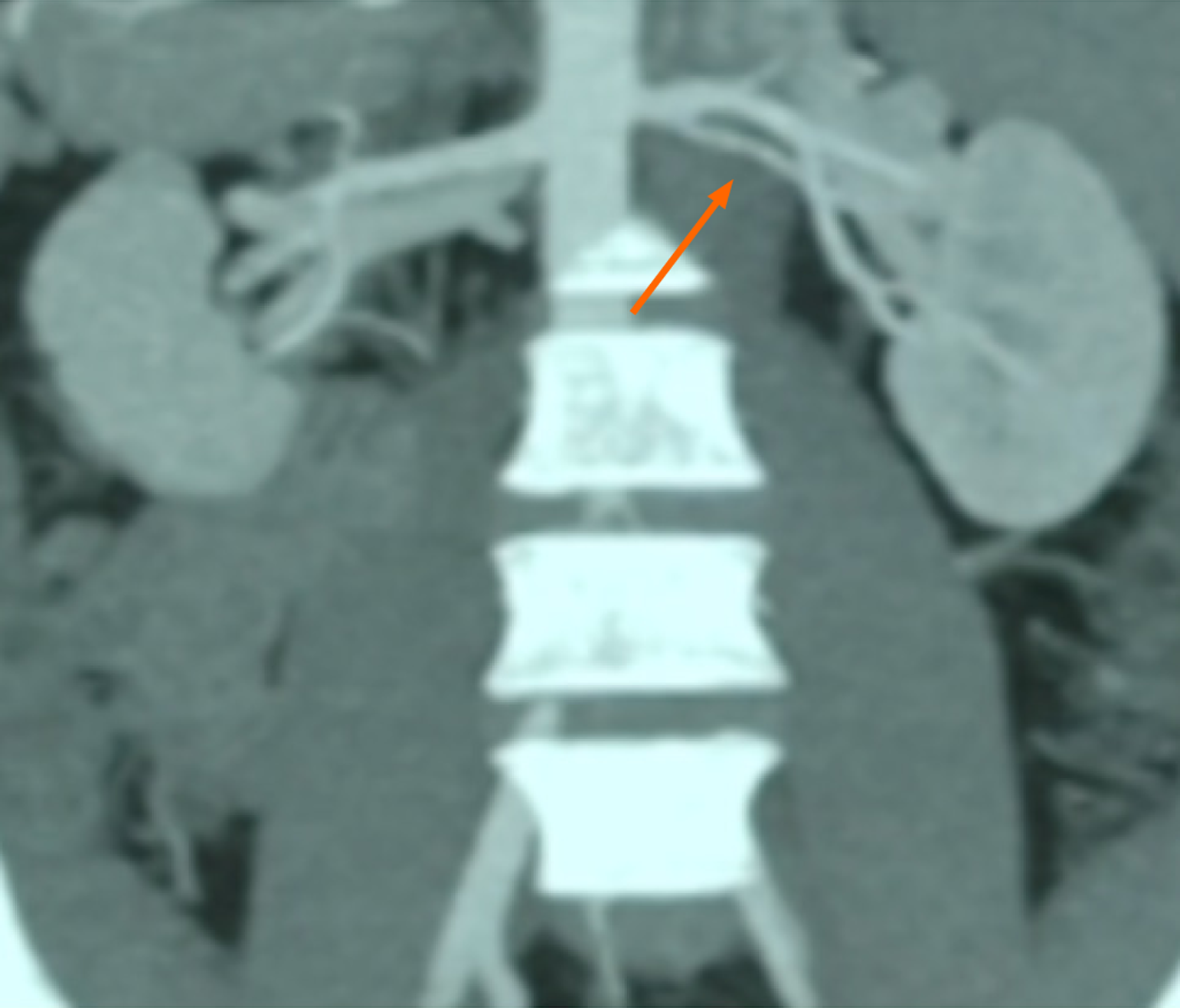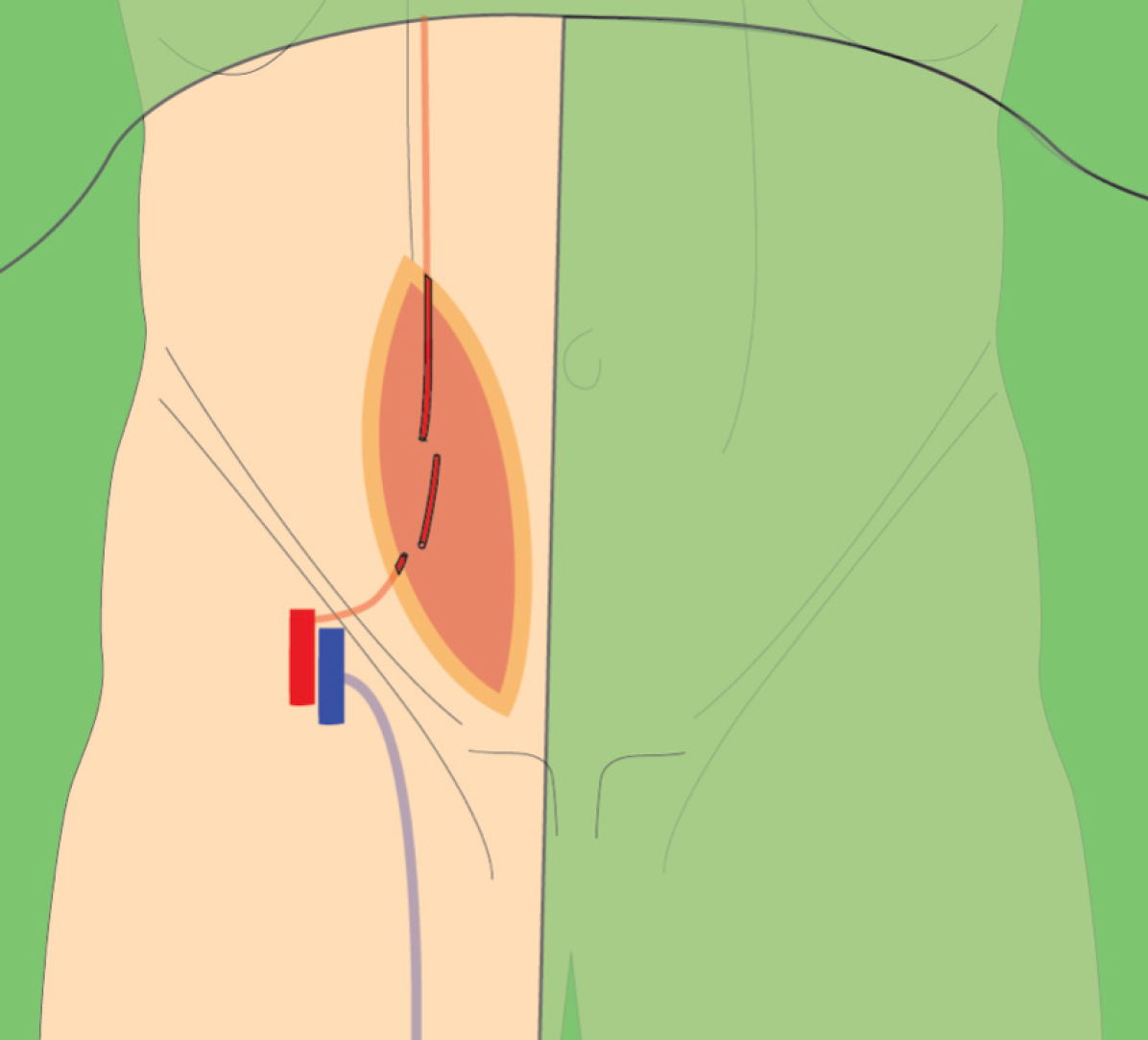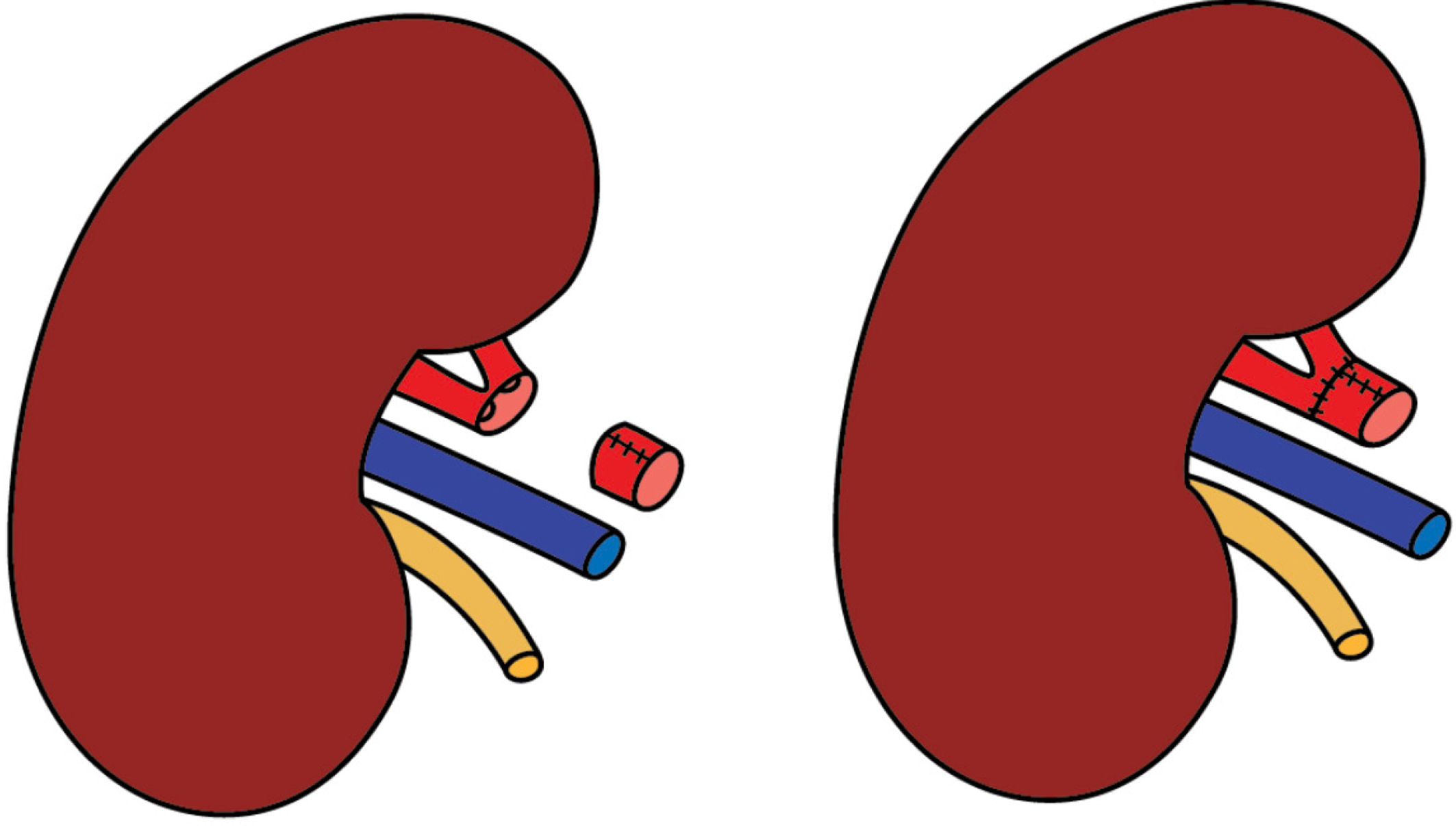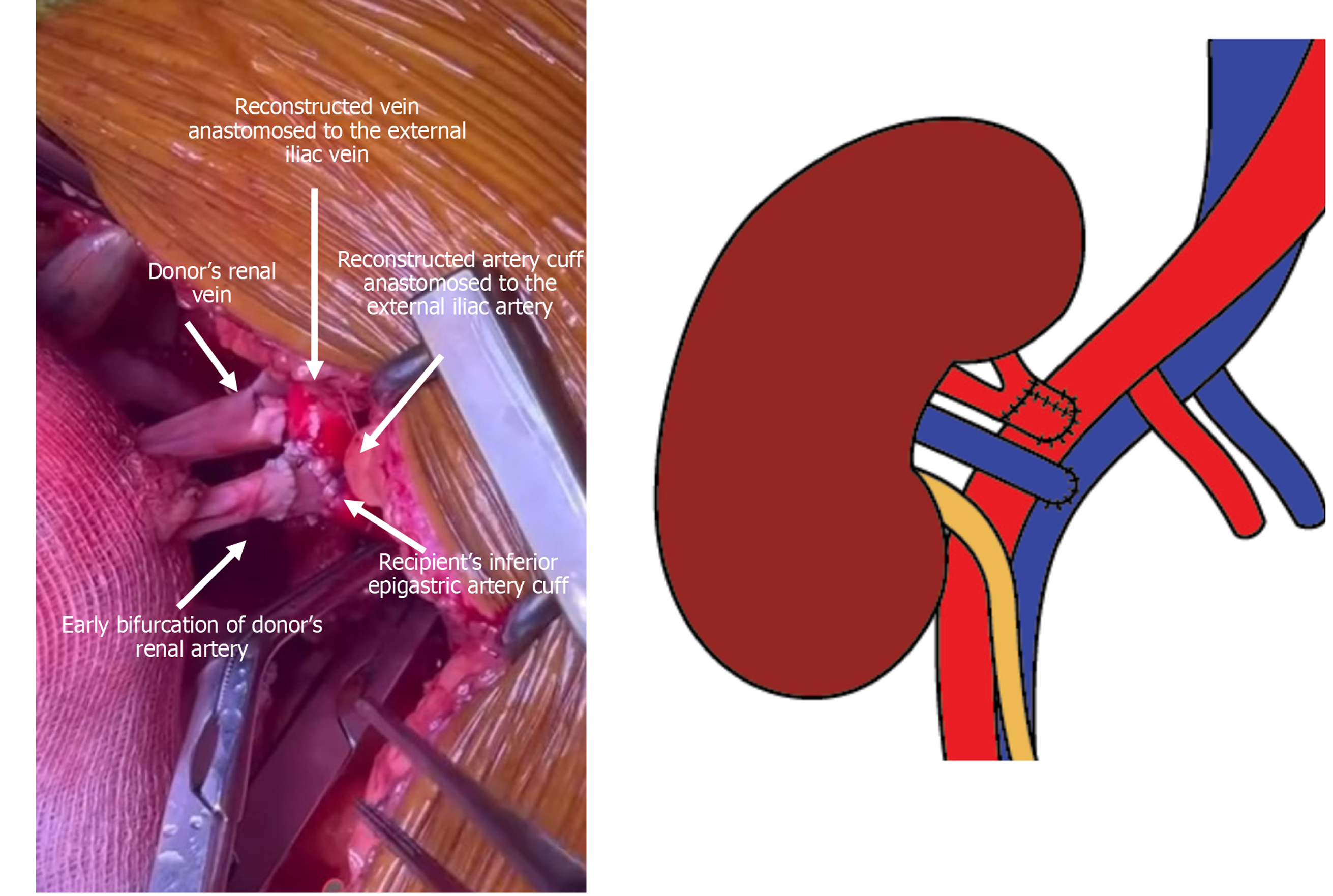Copyright
©The Author(s) 2025.
World J Transplant. Dec 18, 2025; 15(4): 109968
Published online Dec 18, 2025. doi: 10.5500/wjt.v15.i4.109968
Published online Dec 18, 2025. doi: 10.5500/wjt.v15.i4.109968
Figure 1
Pre-operative computed tomography 3D reconstruction of the donor showing an early bifurcation of the left renal artery (orange arrow).
Figure 2
The donor’s left short renal artery transected at the level of its bifurcation, exhibiting a gun-barrel-like bifurcation.
Figure 3
Illustration of inferior epigastric artery harvest through the same para-rectal incision.
Figure 4 The recipient’s inferior epigastric artery was carefully dissected, opened longitudinally, and molded over a syringe to preserve its cylindric shape, thereby creating a vascular cuff for extension and anastomosis with the donor’s renal artery.
A: Longitudinal incision of the epigastric artery; B: Molding of the epigastric artery transversally over the syringe; C: Creation of the vascular cuff using a continuous suture.
Figure 5
Illustration demonstrating end-to-end anastomosis between the inferior epigastric arterial cuff and the donor’s renal artery.
Figure 6 Illustration and peri-operative images of the final configuration of the renal transplant in the right iliac fossa.
End-to-side anastomosis of the donor renal vein to the recipient’s external iliac vein, and of the donor renal artery via the reconstructed cuff- to the external iliac artery was performed.
- Citation: Lekehal B, Ait Youssef N, Lekehal M, Bakkali T, Jdar A, Bounssir A. Inferior epigastric artery cuff interposition for short renal artery in living-donor kidney transplantation: A case report and review of literature. World J Transplant 2025; 15(4): 109968
- URL: https://www.wjgnet.com/2220-3230/full/v15/i4/109968.htm
- DOI: https://dx.doi.org/10.5500/wjt.v15.i4.109968


















